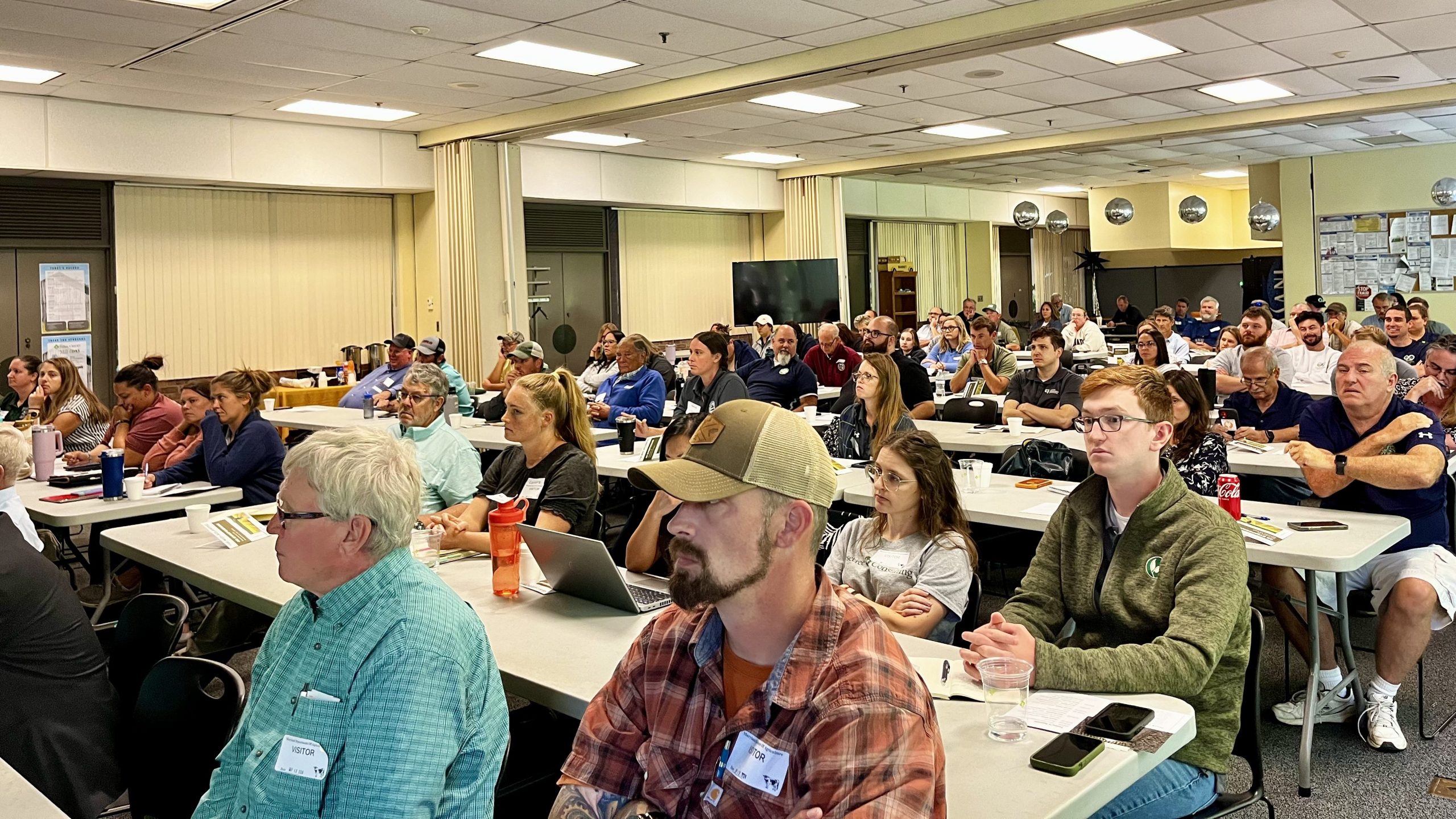2024 4R Symposium
Annapolis, Maryland (September 30, 2024) – On Thursday, September 12th the Mid-Atlantic 4R Nutrient Stewardship Association held their annual 4R Symposium at the Maryland Department of Agriculture. Over 170 individuals attended the hybrid event and heard four outstanding presentations and a farmer panel.
“We were ecstatic to see the growth and interest of 4R farming that after the in-person registration reached full capacity in just three weeks, the team decided to offer a hybrid option to further our reach,” said Delaware Maryland 4R Alliance Chair, Lindsay Thompson.

The free event was made possible with funding from The Fertilizer Institute, Yara, Soil Warrior, Corteva Agriscience, Mosaic, The Mill, Keith Campbell Foundation, Willard Agri-Service, and Horizon Farm Credit. We appreciate the support of each of this year’s sponsors and the partnership we have developed.
The full day was recorded via zoom and can be found on our YouTube page here. A summary of each presentation can be found below. Credits are already submitted and cannot be guaranteed for those interested in watching the recorded event.
Thank you to those who attended our event, please leave any feedback to us online here for next year’s event.
###
Presentation Summaries:
James White, Rutgers University
“How Plants Use Microbes to Enhance Development and Acquire Nutrients”
Doctor White started his presentation covering fungal and bacteria endophytic. Endophytic microbes are absorbed from the soil into plants through the meristem, either by root, stem, and/or leaf. These microbes are needed for development to produce hormones which result in root hair growth, and they provide a source of nutrients. Dr. White then shared about the Rhizophagy (root eating) process and cycle. This process is how plants attract microbes (bacteria, yeasts, and/or soil algae) and absorb them. This process is very important because it; 1) triggers root hair elongation and 2) trigger the gravitropic response in roots, increase root branching, and increase the root and shoot elongation. Microbes enter through the cell, reach reactive oxygen which removes their cell walls (protoplasts) and then exit through root hairs to recharge with nutrients in the soil, then they reenter through the root. Through Dr. White’s 15N Tracking Experiment, where bacteria increased reactive oxygen and plant growth with 30% more nitrogen absorbed (not fixated). In conclusion, there is still a lot of ongoing research to be determined about soil life but you need health soil to utilize the addition of microbes and maintaining a healthy soil allows for the proper microbe environment.
Josh McGrath, USDA-ARS
“FRST: A Journey to Support Farmers with Better Fertilizer Recommendations”
FRST is a tool that created a national database of soil test correlations and calibrations to give farmers and their advisers transparency on where recommendations come from and to give confidence in recommendations while supporting the future soil fertility research. Recommendations are created by soil test correlation, which is the soil test above which determines sufficient fertilizer rate to maximize crop yield for a specific soil test range. Utilize FRST at soiltestfrst.org.
Farmer Panel
Steve Ernst, John C Johnson, and Trey Hill
John C Johnson farms with his brother in Stewartstown, PA growing cover crops, corn, soybeans, wheat, sorghum, sunflowers, and hay.
Trey Hill owns and operates Harborview Farms in Rock Hall, MD as a certified regenerative farm. Harborview grows corn, wheat, soybeans, and barley while focusing on no-till, cover crops, and planting green.
Steve Ernst is an agronomist who farms in the Appalachian Mountains as a direct to market grain dealer. Growing roots, cover crops, soybeans, wheat, hay, sunflowers, hogs, and sheep.
Jarrod Miller, University of Delaware
“Grid Soil Sampling for Variable Rate Applications”
Jarrod talked about what grid sampling is. When covering the density of grid sampling, you can over or under sample, the maximum recommendation is 2.5 acres per sample. The Jarrod presented his research on grid sampling and applying a number of nutrients via variable rate and the nutrient responses. Today, Jarrod is doing research on strip intercropping and biologicals.
Nicole Fiorellino, University of Maryland
“Updating Fertilizer Recommendations for High Management Wheat in Maryland”
Nicole started her presentation with the importance of statistics when it comes to reviewing your data so that you can set your research up for success and have confidence in your results. Nicole is currently working on finding the ideal fertilizer to yield recommendations for Maryland wheat. Through two university sites and three on-farm sites, the first year of wheat trials found a maximum yield of 96 bushels to the acre at 180 pounds of Nitrogen. There has also been a decrease in variability with the more nitrogen at jointing and increase in yield. If you are interested in participating in this upcoming growing season’s trial, please contact her team by October 4th. Find more results and information online here.
The Mid-Atlantic 4R Nutrient Stewardship Association is a non-profit entity working to provide education to farmers on the economic and environmental benefits of implementing 4R nutrient stewardship practices, which will accelerate progress toward clean water and habitat goals. Lear more online here.